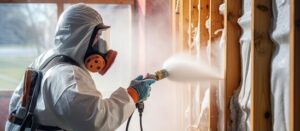Palm Coast Roofing Companies specialize in the construction of roofs, gutters, and siding. They also offer workmanship warranties and product warranties on materials.

Roofing contractors use their expertise to thoroughly inspect damage and determine the full scope of repairs needed. They also source premium-grade replacement shingles and repair materials to ensure long-term durability.
Professional roofers know exactly how to manage the various aspects of re-roofing projects, from start to finish. This helps them to keep the costs down, address any unexpected problems that might arise during the job and complete the project on time and within budget. In addition, they can advise customers on the best roofing materials for their property based on its specific needs and requirements.
Roofing contractors also offer maintenance services to ensure that the roof is in good condition. They can conduct detailed inspections, repair any damages, replace worn or broken roof components and prevent water leaks. They can also install skylights, siding and gutters, repair chimneys, remove debris and carry out other maintenance tasks.
Before choosing a roofing company, it’s important to look at their credentials and track record. A reliable company should have a physical office location, a website, customer reviews and photos of past work. In addition, they should have a business license and insurance coverage to protect themselves and their clients from damage to property and injury.
Roofing companies should have extensive experience with different types of roofs, including flat and shingle roofs. They can help their clients choose the right roofing materials for their properties, advise them on the best roof coverings based on their budget and provide a range of other exterior services. They can also assist with insurance claims and warranty issues.
Hiring a roofing contractor is an important decision for homeowners, as it can save them money in the long run and improve the overall value of their home. However, it’s essential to avoid high-pressure sales tactics, companies that solicit door-to-door or those without a local address or phone number. These are often called storm chasers, and they can do poor work or even scam homeowners.
Besides having the proper skills and qualifications, a roofing contractor should also have the right equipment to do a thorough job. Depending on the type of roof, a contractor may need to use hand tools or power equipment. To minimize risks, they should wear protective clothing and follow safety protocols when handling heavy machinery or sharp objects. They should also have a solid marketing strategy to attract new customers. This can include sending out direct mail, creating a blog and using digital advertising campaigns.
Local Expertise
Roofing companies have a deep understanding of the local weather patterns, storm frequencies, and roof materials. This enables them to provide homeowners with recommendations that fit their specific needs. In addition, they know the area’s building codes and industry norms, ensuring that all work is done up to code.
A local roofing company knows that the quality of their work depends on their reputation in the community. They work hard to build relationships with the people they serve, and they are always honest and fair in their dealings. They also take care to hire only licensed professionals, and they typically offer substantial warranties on their workmanship and materials.
Local roofing companies are usually registered as a sole proprietorship, partnership, corporation or limited liability company (LLC). They also obtain all the necessary licenses and permits required to operate in your city or county. In contrast, many fly-by-night roofing contractors are simply “storm chasers,” and they may only be in town for a short time before moving on to another storm. A reputable local roofing company will be in business indefinitely and can provide you with the service and accountability you need. They are also more likely to have established standing with manufacturers, enabling them to offer extended warranties on their work and products.
Personalized Consulting
Whether you are a new roofing contractor or an established business owner, you must understand your full operating costs in order to make the most of your opportunities and minimize your risk. Besides the obvious (materials and labor), you should also consider overhead expenses like rent, utilities, insurance, marketing and administrative costs. A good accountant can help you determine these hard and soft costs before you invest in a new roofing venture.
One thing you’ll find with local roofers is that they take a more personalized approach to the sales process and customer service. You might even speak with the same person every time you call. In contrast, a national company may have multiple employees handling calls from different locations. This can lead to inconsistent or unsatisfactory results.
Some local roofers specialize in certain types of roofing work. For example, they might focus on residential roofing, commercial roofing or both. They might offer in-house financing or have a partnership with a finance company for preapproved loans. They might also offer a variety of roofing materials, from low- to high-end products.
Some local roofers are more “insurance-focused” and work with homeowners’ insurance companies to replace or repair damaged roofing. These roofers are often called storm chasers, and they follow big weather events to get the word out on their services. They usually require a lengthy sales presentation and may ask for the homeowner to pay the first half of the bill upfront. You can avoid this type of local roofer by contacting your insurance company directly to schedule an inspection.
Savings
Roofing companies have connections to suppliers that can get them better deals on premium-grade materials, saving you money. They also know which materials are best suited to local weather conditions and roofing types, which helps prevent premature wear or damage. These cost-saving factors can make a significant impact on the final quote.
Family-operated roofing companies often have a personal investment in every job. They are beholden to their reputation and legacy, leading them to prioritize customer satisfaction. They take pride in their work, ensuring each project is completed to the highest standards. This translates to faster and smoother service execution and better-quality craftsmanship.
They are also more likely to offer a warranty on their workmanship. This can provide peace of mind and assurance that your roof is protected for a long time. Additionally, they may offer a maintenance plan that can reduce future repairs and maintenance costs.
As the owner of a roofing business, you will need to decide what legal structure to establish. There are several options, including a sole proprietorship, partnership, corporation, or limited liability company (LLC). Each has its own advantages and disadvantages. Consult with a lawyer to find out which one is right for your situation.
You will also need to obtain the necessary licensing and permits. These vary by jurisdiction. For example, you may need to acquire a general contractor’s license to oversee construction projects and other tradespeople. You will also need insurance to protect yourself and your employees. This includes general liability, worker’s compensation, and equipment insurance.
In addition, a roofing company should have a solid reputation in the community. This can be achieved by sponsoring local sporting teams, engaging in community events, and contributing to charities. This will increase your brand exposure, making it easier to find new customers.
Lastly, a roofing company should be licensed and insured. This will ensure that they are qualified to perform a thorough inspection of your roof and recommend the appropriate repairs. It will also help you avoid unlicensed or under-insured contractors. In the long run, this will save you money and protect you from being ripped off.

